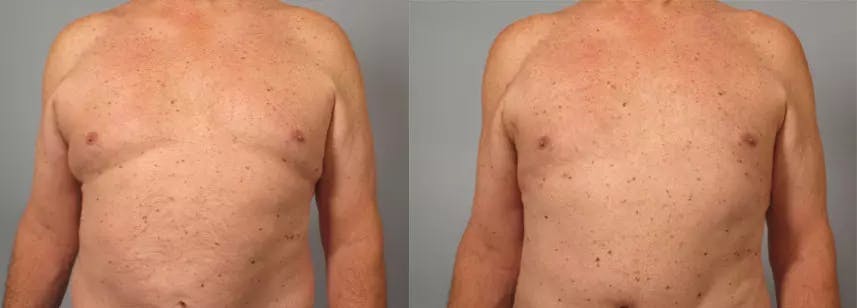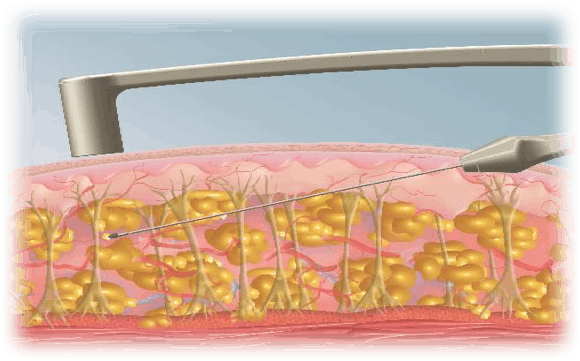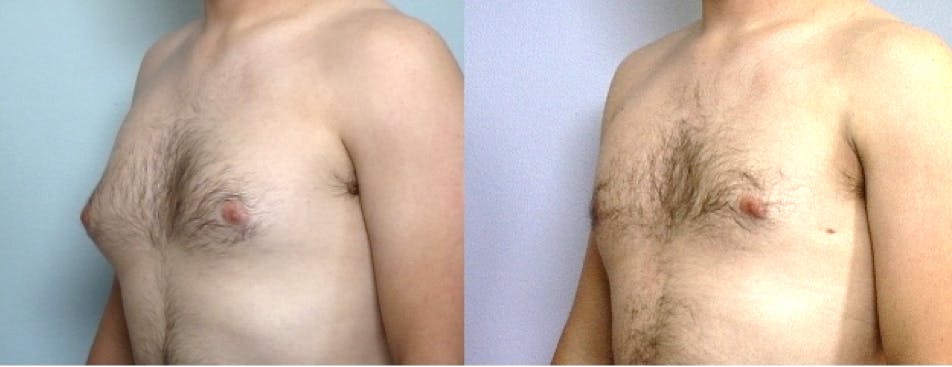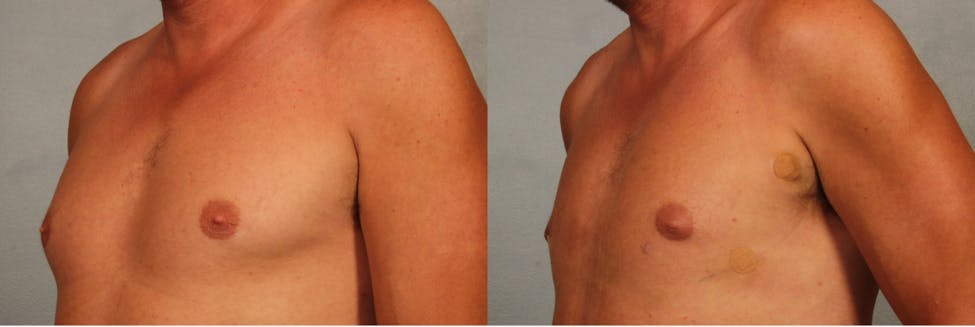This 22-year-old lost almost 100 pounds over a year. He became frustrated by the lack of response to diet and exercise; his “man boobs” made him very self-conscious. He hoped for an improvement so he not feel awkward when he was not wearing a shirt.
Left: 22-year-old after massive weight loss.
Right: Patient six weeks following radio frequency-assisted liposuction to the male chest.















